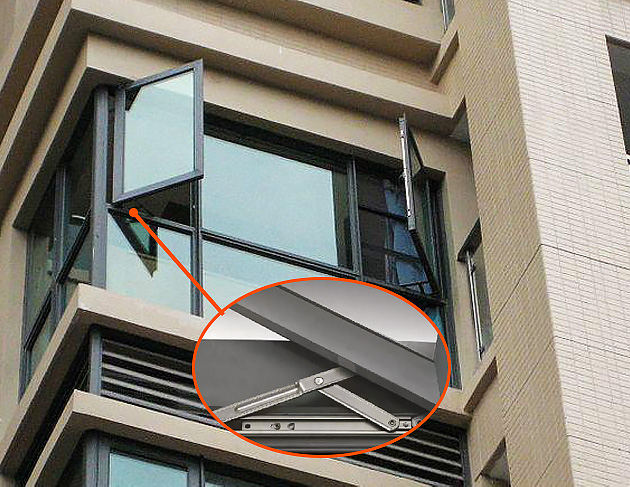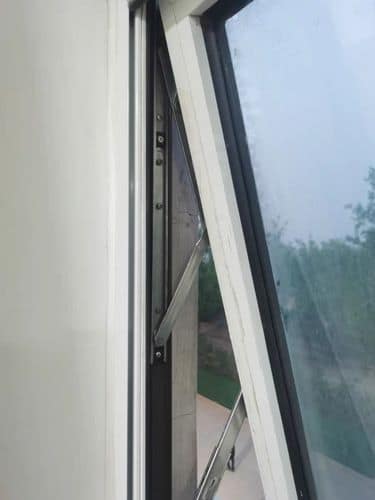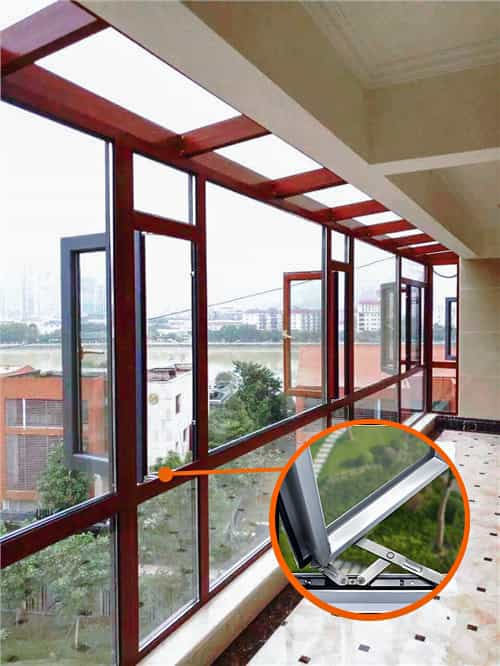Window Hinge Types: An In-Depth Guide
When it comes to home decoration, choosing the right window hinge is a crucial decision. The hinges you choose can make a significant difference in how well your windows function and how long they last. This article will provide a detailed introduction to various types of window hinges, including window friction hinges, friction hinges, side-hung hinges, and friction window hinges. We will also offer suggestions on how to select and install each type of hinge for optimal performance.

Window Friction Hinges
The first type of hinge we'll discuss is the window friction hinge. This type of hinge primarily relies on friction to maintain the open or closed state of the window. It's an easy-to-use option that doesn't require any additional tools for operation. However, its dependence on friction means it might not perform as well in strong wind conditions. If you live in an area with high winds, you might want to consider other types of hinges.
Friction window Hinges and Friction hinge Windows
Next up are friction window hinges and friction hinge windows. These two types of hinges share many similarities with window friction hinges. They both use friction to keep the window open. The primary difference is that they come equipped with an additional part - a friction hinge. When the window opens to a certain extent, this hinge prevents the window from opening further, thus avoiding potential hazards. If you're concerned about the window suddenly opening in strong wind conditions, these two types of hinges could be a better choice.
Side-hung Window Hinges
Side-hung window hinges are another common type of hinge found in modern homes. This type of hinge features a simple design and is easy to install. Typically, it consists of two parts: a hinge seat fixed to the window frame, and an hinge arm installed on the frame itself. To open or close the window, all you need to do is rotate the hinge arm. While this type of hinge is suitable for most PVC windows, keep in mind that its relatively simple design may not offer much resistance to strong external forces such as high winds.

Adjustable Double-Glazed Windows Hinges
Adjustable double-glazed windows hinges are designed to adjust the height and width of the window to fit different sizes and positions. This is particularly important when installing double-glazed windows because their thickness can make them challenging to open or close completely if the dimensions are incorrect. These hinges allow homeowners to customize their windows to meet their specific needs, enhancing both functionality and aesthetic appeal.
Easy-to-Clean Hinges
Lastly, we have the easy-to-clean hinge. This type of hinge is designed with ease of cleaning in mind, often featuring a structural design that makes disassembly simple and fast. For homeowners who prioritize cleanliness, this type of hinge is an attractive option that can help keep your windows looking sparkling clean.
Factors to Consider When Choosing a Window Hinge
When selecting a window hinge, there are several factors you should take into account. Firstly, consider the type of window you have. Different types of windows require different types of hinges. Secondly, think about where you'll be installing the hinges. Some locations may require specialized hinges to ensure proper security and stability. Thirdly, consider the climate conditions in your area. If you live in an area with high winds or extreme temperatures, you may need to choose an appropriate hinge that can withstand these conditions. Fourthly, think about your own preferences. Some people prefer simple, no-frills hinges, while others may value more complex designs that offer added functionality or aesthetic appeal. Finally, consult with a professional if you're unsure which type of hinge would be best for your needs.

Tips for Installation
Once you've selected the right type of hinge for your window, it's time to install it. Here are some tips to help you get started:
1. Prepare the area: Make sure the area around the window is clean and free from debris before beginning installation.
2. Position the hinge: Place the hinge on the window frame according to the manufacturer's instructions.
3. Attach the hinge: Use screws or other appropriate hardware to attach the hinge securely to the window frame.
4. Test the hinge: Open and close the window several times to ensure that the hinge is working properly and that the window opens and closes smoothly.
5. Tighten loose screws: If any screws feel loose after installation, tighten them firmly with a screwdriver.
6. Inspect for damage: After installation, inspect the area around the window for any signs of damage or wear and tear. If you notice any issues, contact a professional for assistance.
In conclusion, selecting the right window hinge is essential to ensure that your windows function properly and last for years to come. By understanding the different types of hinges available and considering your specific needs and preferences, you can make an informed decision and enjoy a beautiful, functional window system in your home.
More relate:
What is window friction hinge and how to chose?
How should the maintenance of window hardware accessories be done?

